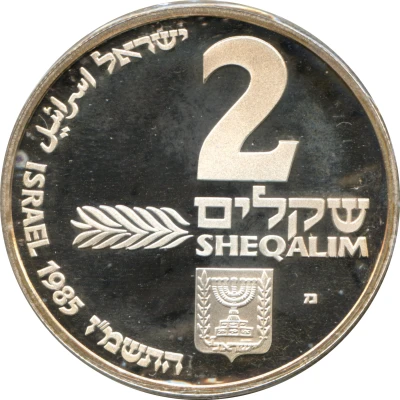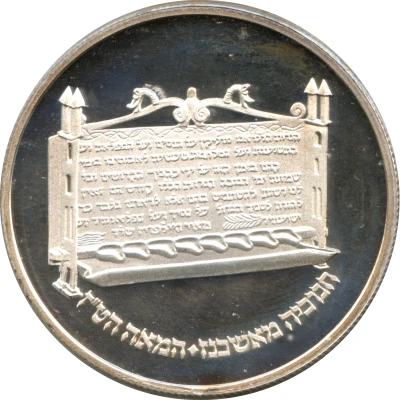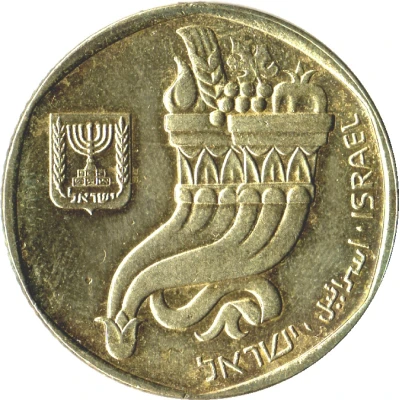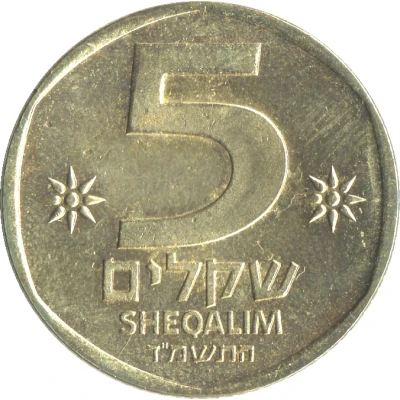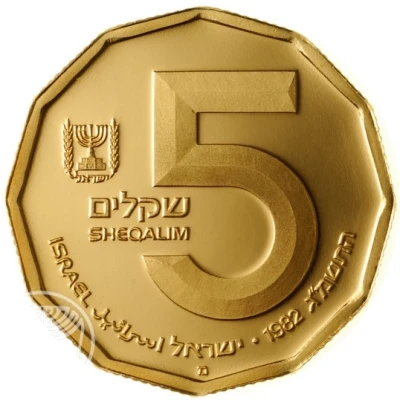
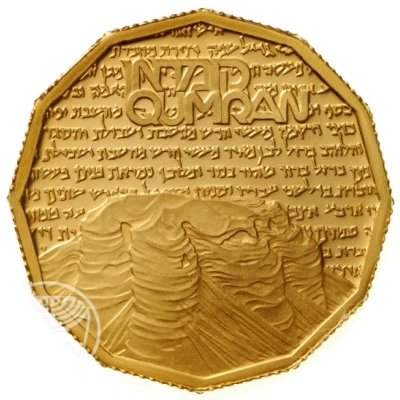

© Israel Coins and Medals Corp.
5 Sheqalim Qumran
5742 (1982) year| Gold (.900) | 8.63 g | 22 mm |
| Issuer | Israel |
|---|---|
| Period | State of Israel (1948-date) |
| Type | Non-circulating coin |
| Year | 5742 (1982) |
| Calendar | Hebrew |
| Value | 5 Sheqalim (5 ILR) |
| Currency | Old Shekel (1980-1985) |
| Composition | Gold (.900) |
| Weight | 8.63 g |
| Diameter | 22 mm |
| Shape | Dodecagonal (12-sided) |
| Technique | Milled |
| Orientation | Medal alignment ↑↑ |
| Demonetized | Yes |
| Updated | 2024-10-05 |
| Numista | N#89429 |
|---|---|
| Rarity index | 91% |
Reverse
The cliffs, location of the caves where the scrolls were discovered. The word Qumran in Hebrew and English on a background of the ancient writings of the scrolls.
Scripts: Hebrew, Latin
Lettering: קומראן QUMRAN
Engraver: Eliezer Weishoff
Edge
Milled
Comment
At Qumran, located northwest of the Dead Sea, about 24 km east of Jerusalem, the remnants of 700 scrolls were discovered, dating back to the first century B.C.E. and to the first century C.E., an important period in Jewish history as well as being the first period of Christianity.These scrolls belonged to a Jewish woman a member of one of three major Jewish sects of that period. The extreme faction of that sect established a settlement in one of the arid desert tracts of Qumran and remained in existence for two centuries.
About 200 of the scrolls are from biblical times. At Qumran all the Books of the Bible, except the Book of Esther, were discovered. We now have manuscripts in our possession that are thousands of years old, some of them dating close to the period of their authorship.
After the Qumran discoveries, there began extensive searches in the desert for other manuscripts and six additional ones containing ancient writings were discovered, among them those that pre-dated the Qumran finds (Wadi Dalia in the period of Alexander the Great), and some from later periods (Masada, from the period of the First Revolt against the Romans in 70 BCE, the Murrabaat Caves and River, from the Second Revolt against the Romans - 135 CE) Khirbat Mird, a monastery from the 8th century CE. These discoveries, the most outstanding among them being those of the Qumran caves have enriched our knowledge of early history.
Interesting fact
One interesting fact about the Non-circulating coin 5 Sheqalim (Qumran) 5742 (1982) from Israel made of Gold (.900) weighing 8.63 g is that it was minted to commemorate the ancient Qumran community, which was a Jewish settlement near the Dead Sea that existed during the Second Temple period. The coin's design features an image of the Qumran ruins and the Dead Sea in the background, along with inscriptions in Hebrew and English that describe the coin's denomination and the year it was minted. This coin is a unique piece of history that not only showcases the rich history of Israel but also serves as a reminder of the significance of the Qumran community in Jewish heritage.
Price
| Date | Mintage | VG | F | VF | XF | AU | UNC |
|---|---|---|---|---|---|---|---|
| 5742 (1982) מ | 4927 | - | - | - | - | - | - |
Values in the table are based on evaluations by sales realized on Internet platforms. They serve as an indication only for 5 Sheqalim (Qumran) 5742 (1982) coin.
